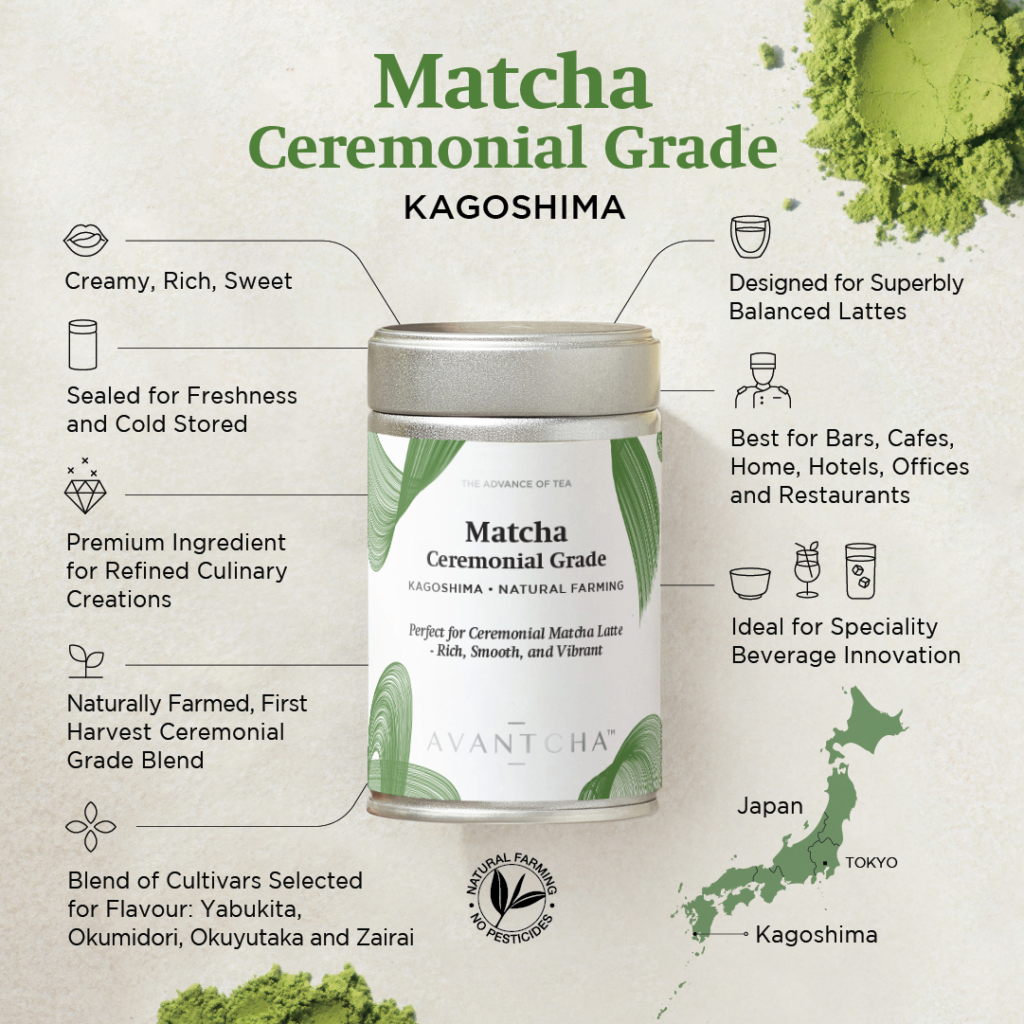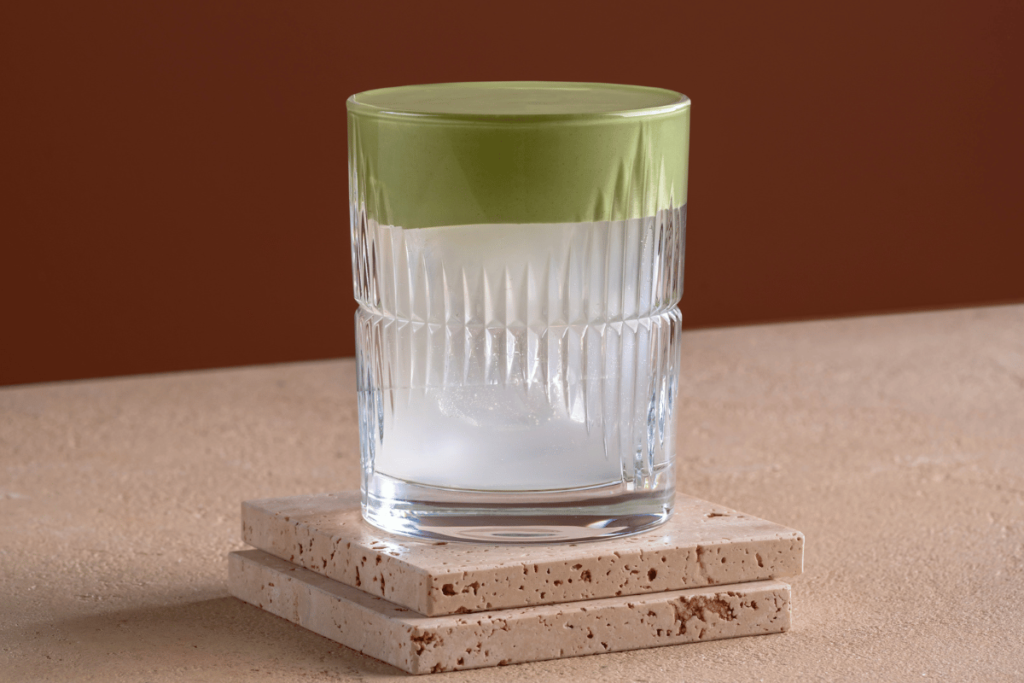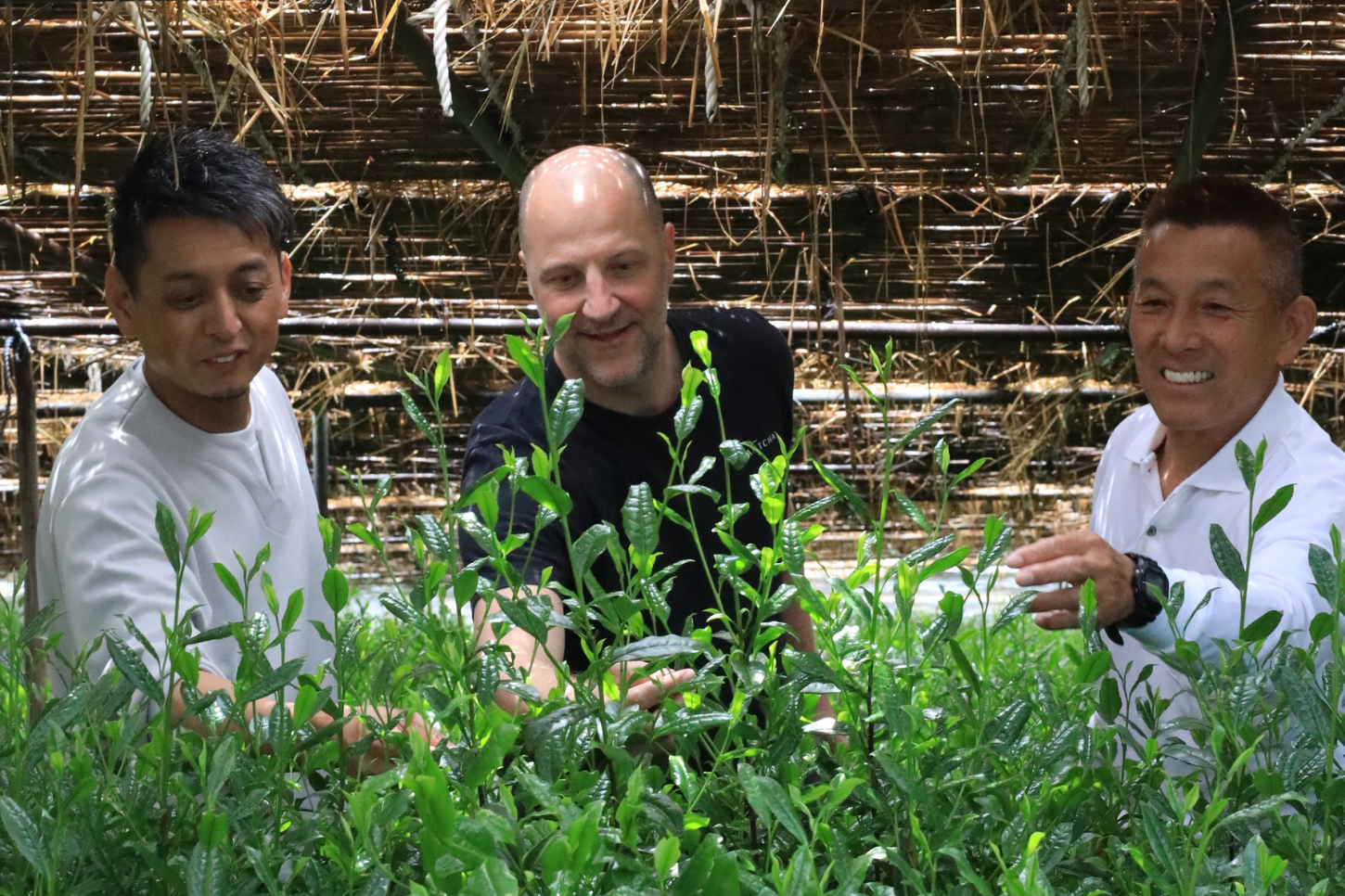The Top Four Matcha Mistakes
Matcha is everywhere, yet far too often, cafés, restaurants, and offices are still serving it poorly, using low‑quality powders that taste bitter, choosing unreliable suppliers, and ultimately giving consumers the wrong impression of what this extraordinary Japanese tea can be.
As Matcha becomes a £4.3 billion global market with projected 8% annual growth through 2030, the opportunity is massive, but so is the responsibility. Can the industry afford to make so many Matcha mistakes?

“Most people haven’t tasted real Matcha,” says Markus Zbinden, founder of AVANTCHA pictured above, celebrating a decade of specialty tea innovation. “They’ve had stale, low-grade, mass-market powder that tastes grassy and bitter. That’s not Matcha — that’s a missed opportunity.”
Matcha Mistakes
From cafés to corporate pantries, the same four issues keep surfacing:
1. Poor Quality = Poor Performance
Low-grade Matcha (often culinary grade or bulk-blended) oxidises quickly, turning dull in colour and bitter in taste. The result? A lacklustre latte, poor customer reviews, and limited repeat sales.
2. Mishandling Kills the Experience
Even good Matcha can go bad if it’s stored poorly. Without protection from air, heat, and light, freshness is lost, and so is the customer.
3. Unreliable Suppliers Leave Brands Stranded
Without clear sourcing, traceability, or logistical care, cafés are left with inconsistent product and no support when it matters most.
4. Buying from an Inexperienced Source
Matcha is now everywhere… in lifestyle brands, skincare lines, boutique cafes, and fitness startups. But few of these players truly understand tea. AVANTCHA has spent over a decade sourcing, storing, and brewing the world’s finest teas with precision. That depth of knowledge can’t be improvised.
“It’s not just what Matcha you buy — it’s how it’s handled from tea garden to cup,” explains Markus. “You wouldn’t leave fresh coffee beans in the sun or pour stale milk into a cappuccino. So why treat Matcha that way?”

Matcha, Done Right: Fresh, Fun, Versatile and Profitable
We’re challenging the industry to raise its game — starting with our Ceremonial Grade Matcha Kagoshima Natural Farming. This isn’t commodity-grade green powder. It’s precision-crafted for modern hospitality:
- A proprietary blend of four cultivars (Yabukita, Okumidori, Okuyutaka, Zairai) for balance, depth and vibrancy
- Grown organically in Kagoshima, one of Japan’s most prized terroirs for tea
- Stone-milled to an ultra-fine powder, then nitrogen-sealed to preserve colour, aroma, and flavour
- Cold-chain transported and stored, arriving fresh and bright green
- Cafés are trained to store it refrigerated, sealed, and used within optimal windows
In short: AVANTCHA ensures that the Matcha that reaches the customer tastes as good as it did the day it left Japan.


Why It Matters — And Why It Pays Off
We believe that when served fresh and properly, premium Matcha can be:
- Twice as profitable as chai or turmeric lattes
- More engaging for wellness-focused, social media‑savvy customers
- A flexible ingredient across hot drinks, cold brews, mocktails, desserts and even savoury pairings
“Our Ceremonial Grade Matcha Kagoshima Natural Farming isn’t just for lattes, it’s for mixology, patisserie, even fine dining. When you start with great Matcha and handle it well, the creative options are endless,” says Markus.
We support partners with training, menu design, innovation sessions and ongoing supply management, helping brands maximise flavour, margin, and consistency.
Raising the Bar for the Industry
“Matcha deserves the same respect as specialty coffee or fine wine,” says Markus. “It’s a delicate, extraordinary product that should be treated with care, knowledge, and creativity.”
We are calling on cafés, hotels, and workplaces to rethink their Matcha. Choose quality. Store it right. Train your team. Serve something exceptional. You might also like to visit our Matcha for Professionals knowledge page here >
Because the world doesn’t need more bitter Matcha — it needs better Matcha.
Read more about Matcha and hospitality:
AVANTCHA Matcha: Why We Never Run Out >
Looking for ‘True’ Uji Matcha in Japan >
Matcha in 2025: A Guide for Consumers & Industry >













